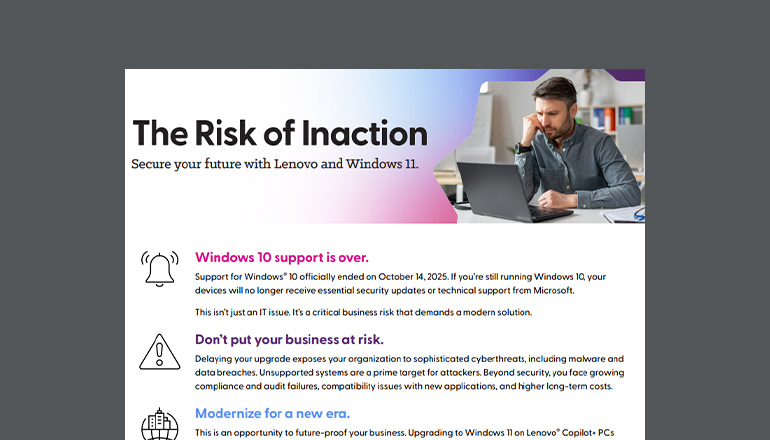Partner Voices Supporting Inclusivity And Diversity In The Hybrid Workplace
As organizations make the shift to hybrid work, it’s important to ensure that all employees’ voices and needs can be clearly heard — no matter where or how they work. Learn how Insight and Chrome Enterprise help support greater accessibility, diversity and inclusivity for companies making the shift.
By Insight Editor / 19 Nov 2021 / Topics: Devices Hardware Google ChromeOS Software

Listen to a deeper conversation in this TechTalk.
For many organizations, remote work has been tremendously successful — in no small part thanks to technology. Yet with vaccinations and safety precautions now firmly established, many organizations have begun slowly allowing selected workforces to return to the office, heralding a new era: the age of hybrid work.
As they begin their hybrid work journeys, employees need to be empowered to stay productive and efficient. But they also need to be empowered in other ways. Some of the major challenges hybrid organizations are now grappling with include employee mental health, work/life balance and — importantly — diversity and inclusion. Ensuring that all employees’ voices and needs can be clearly heard — no matter where or how they work — is one of the most important goals in ensuring a successful transition to new ways of working.
The challenge of diversity and inclusion
In any hybrid workplace, issues of diversity and inclusion are likely to appear early on — often in as simple a form as the divide between those who return to the office physically and those who remain remote.
Issues around accessibility and inclusion are primary. For example, are remote employees at a disadvantage when it comes to having their voices heard — and listened to — in meetings? Are their opinions considered as seriously as those of employees present in the boardroom? Is technology throwing up any barriers to comprehension, participation or data access when it comes to day-to-day activities?
A second question is around whether there are other groups of employees who are disproportionately benefitting from — or being disadvantaged by — remote work. For example, younger workers may inherently prefer and be more adept at remote working than older workers. However, unacknowledged biases may mean that remote workers are less considered for promotion than those who appear daily in the office.
On the converse, do certain employees, groups or communities find it harder than others to manage either remote working, or a requirement to return to the office in person? Do childcare or other family needs interfere? Do special visual or auditory needs or other accessibility issues stand in the way of any employees being able to give their all?
Paving the way for success
A recent study from Gartner found that companies that effectively manage the transition to a hybrid work environment and employ sustainable initiatives can boost inclusion by nearly a quarter. These findings come amid a growing push from businesses to formally and publicly commit to increasing diversity, improving inclusion and addressing inequity.
To effectively transition to new ways of working, organizations must undertake a number of initiatives. These include: identifying the needs of different types of employees, investing in the necessary resources to support their success, leveraging education, wellbeing and training programs and inculcating a culture of diversity and inclusivity at every level.
Fostering diversity and inclusivity with Chrome
Ensuring all employees can easily see, read, hear and access the information they need to work is an important first step on any company’s journey to being a more inclusive, diverse and supportive place to work.
Chrome browser and ChromeOS offer a number of accessibility features for promoting a fairer, more inclusive workplace. For example, with the Google Admin console for ChromeOS devices, IT can seamlessly manage accessibility policies across tools such as ChromeVox spoken feedback, select-to-speak, high contrast, screen magnifier, sticky keys, and virtual Keyboard.
Chrome also allows employees to customize web page content and font sizes, change the cursor color, export accessible PDFs, generate real-time captions for media, select text to read aloud and leverage dictation functionality.
With the hybrid model set to have a long-lasting impact on work around the world, fostering a diverse and inclusive culture will be necessary for organizations to attract and retain top talent. Yet this can only happen if there’s both awareness and eagerness to address the challenges.
With ChromeOS, organizations can lay a strong foundation for an organizational culture that embraces and supports employees’ differing needs, paving the way for a future where all employees can work effectively, comfortably and productively.








